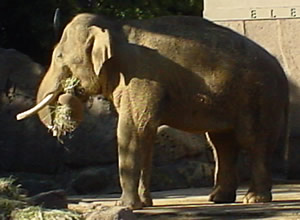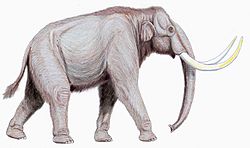Elephas
Elephas is one of two living genera in the family of elephants, Elephantidae. The Asian elephant is the only living species of this genus.[1] Some of the extinct species are Elephas beyeri, Elephas ekorensis, Elephas hysudricus, Elephas hysudrindicus, and Elephas planifrons.
| Elephas Temporal range: Pliocene to present
| |
|---|---|

| |
| Asian elephant | |
| Scientific classification | |
| Kingdom: | Animalia |
| Phylum: | Chordata |
| Order: | Proboscidea |
| Family: | Elephantidae |
| Tribe: | Elephantini |
| Genus: | Elephas Linnaeus, 1758 |
| Type species | |
| Elephas maximus | |
| Species | |
|
For others, see text | |
| Synonyms | |
|
Hypselephas | |




